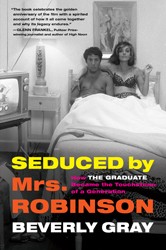By
– August 30, 2011
The title of this volume, Jews at Home: The Domestication of Identity may sound a little off-putting to non-academics. What is the domestication of identity? Don’t be fooled by the title. The anthology is highly readable and captivating. The conceptual thread linking the fifteen articles is their emphasis on how the Jewish family has shaped Jewish cultural life. The Jewish family over time has provided diaspora Jews with an “at-homeness in exile,” an observation made by Bronner in his incisive introduction to this anthology. The family is the ultimate domestic sphere, hence the title of the book.
This volume is the second in the Jewish Cultural Series published by the Littman Library of Jewish Civilization. The articles are intriguing and far-ranging in topic and geographic area, including Jewish life in Argentina, Brazil, Europe, London, Israel, and the United States. They serve to underscore that frequently taken for granted cultural acts and objects play a major role in sustaining the ethos of group. For example, a delightful article by Joellyn Wallen Zollman shows how the sisterhood gift shop in the United States in the mid-fifties served as a resource for shaping the Jewish home.
In the article “From the Nightclub to the Living Room: Gender, Ethnicity and Upward Mobility in the 1950’s Party Records of Three Jewish Women Comics” Giovana P. Del Negro describes how three racy Jewish comics, Belle Barth, Pearl Williams, and Patsy Abbott, helped to redefine family life, gender, ethnicity, class, and “whiteness” in the 1950’s for both Jewish and non-Jewish audiences. Their “earthy, shtetl” humor was used to rail against “societal mores that told them to be quiet, well-behaved, and sexually passive.” These three bawdy female Yiddish style entertainers were early pioneers of comedy routines and the women’s movement.
Shalom Sabar in his engaging study, “From Sacred Symbol to Key Ring: Hamsa in Jewish and Israeli Societies,” traces the origin and proliferation of the hamsa sold in all Judaic shops, and incorporated in many Jewish folk arts and worn by Jews and non-Jews alike. The reader will discover just how the ubiquitous hamsa has developed into a cultural icon reflecting the melding of cultural norms of the Jews from Islamic countries and those of the Ashkenazim dating back to the 1800’s. The article is filled with delightful photographs of different types of Hamsas used in a variety of settings, including as wedding souvenirs and car amulets, in synagogues and in homes.
Still another fascinating article is “770 Eastern Parkway: The Rebbe’s Home as Icon” by Gabrielle A. Berlinger. Rebbe Menachem Mendel Schneerson, the seventh leader of the Chabad Lubavitch Hasidim, lived at 770 Eastern Parkway in Crown Heights, Brooklyn. “The Rebbe” died in 1994 at the age of 92 with no apparent heir. A cornerstone of the Rebbe’s policy was to send shlichim (emissaries) out from Crown Heights all over the world to deepen Jewish religious practice. Over 100,000 Jews were “resettled, with the Rebbe’s blessing” according to Berlinger. The reverence for The Rebbe was so great that the Chabad movement built eleven architectural replicas of his 770 home. An identical version of 770 was built in Tel Aviv and the other ten copies are found in Haifa, Sao Paulo, Brazil, Rutgers University in New Jersey, Buenos Aires, Argentina, Milan, Italy, Melbourne Australia, Montreal Canada and two in Los Angeles. Photos in the article serve to illustrate their similarity to 770. Berlinger makes the astute observation that in effect, the 770 edifice has become a “brand,” almost a “new Jerusalem,” for the globalized Chabad movement and serves to provide cohesion, and a spiritual home to the highly dispersed Lubavitch shlichim.
The other articles in this anthology are equally engaging. Readers who relish whimsy with their scholarly analysis will especially delight in reading this volume. It is also heartening to see that the scholarly study of Jewish cultural life has joined the ranks of cultural studies, an area of burgeoning importance in universities all over the world. Archival photographs, biographies of contributors, endnotes, index, illustrations.
This volume is the second in the Jewish Cultural Series published by the Littman Library of Jewish Civilization. The articles are intriguing and far-ranging in topic and geographic area, including Jewish life in Argentina, Brazil, Europe, London, Israel, and the United States. They serve to underscore that frequently taken for granted cultural acts and objects play a major role in sustaining the ethos of group. For example, a delightful article by Joellyn Wallen Zollman shows how the sisterhood gift shop in the United States in the mid-fifties served as a resource for shaping the Jewish home.
In the article “From the Nightclub to the Living Room: Gender, Ethnicity and Upward Mobility in the 1950’s Party Records of Three Jewish Women Comics” Giovana P. Del Negro describes how three racy Jewish comics, Belle Barth, Pearl Williams, and Patsy Abbott, helped to redefine family life, gender, ethnicity, class, and “whiteness” in the 1950’s for both Jewish and non-Jewish audiences. Their “earthy, shtetl” humor was used to rail against “societal mores that told them to be quiet, well-behaved, and sexually passive.” These three bawdy female Yiddish style entertainers were early pioneers of comedy routines and the women’s movement.
Shalom Sabar in his engaging study, “From Sacred Symbol to Key Ring: Hamsa in Jewish and Israeli Societies,” traces the origin and proliferation of the hamsa sold in all Judaic shops, and incorporated in many Jewish folk arts and worn by Jews and non-Jews alike. The reader will discover just how the ubiquitous hamsa has developed into a cultural icon reflecting the melding of cultural norms of the Jews from Islamic countries and those of the Ashkenazim dating back to the 1800’s. The article is filled with delightful photographs of different types of Hamsas used in a variety of settings, including as wedding souvenirs and car amulets, in synagogues and in homes.
Still another fascinating article is “770 Eastern Parkway: The Rebbe’s Home as Icon” by Gabrielle A. Berlinger. Rebbe Menachem Mendel Schneerson, the seventh leader of the Chabad Lubavitch Hasidim, lived at 770 Eastern Parkway in Crown Heights, Brooklyn. “The Rebbe” died in 1994 at the age of 92 with no apparent heir. A cornerstone of the Rebbe’s policy was to send shlichim (emissaries) out from Crown Heights all over the world to deepen Jewish religious practice. Over 100,000 Jews were “resettled, with the Rebbe’s blessing” according to Berlinger. The reverence for The Rebbe was so great that the Chabad movement built eleven architectural replicas of his 770 home. An identical version of 770 was built in Tel Aviv and the other ten copies are found in Haifa, Sao Paulo, Brazil, Rutgers University in New Jersey, Buenos Aires, Argentina, Milan, Italy, Melbourne Australia, Montreal Canada and two in Los Angeles. Photos in the article serve to illustrate their similarity to 770. Berlinger makes the astute observation that in effect, the 770 edifice has become a “brand,” almost a “new Jerusalem,” for the globalized Chabad movement and serves to provide cohesion, and a spiritual home to the highly dispersed Lubavitch shlichim.
The other articles in this anthology are equally engaging. Readers who relish whimsy with their scholarly analysis will especially delight in reading this volume. It is also heartening to see that the scholarly study of Jewish cultural life has joined the ranks of cultural studies, an area of burgeoning importance in universities all over the world. Archival photographs, biographies of contributors, endnotes, index, illustrations.
Carol Poll, Ph.D., is the retired Chair of the Social Sciences Department and Professor of Sociology at the Fashion Institute of Technology of the State University of New York. Her areas of interest include the sociology of race and ethnic relations, the sociology of marriage, family and gender roles and the sociology of Jews.




